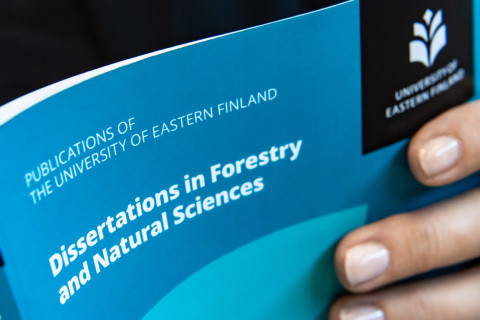The doctoral dissertation in the Environmental Physics will be examined at the Faculty of Science and Forestry at Kuopio Campus.
Tiny liquid or solid particles carried by air, atmospheric aerosols, are present everywhere we go and affect our lives in numerous ways. In addition to many commonly known effects, such as air quality and visibility, these aerosols are behind several physical processes that influence the upcoming weather in the short term and contribute to climate change in the long term. This thesis focuses on one such process, ice nucleation induced by those particles. The importance of atmospheric ice processes originates from their crucial contribution to cloud formation and lifetime which, in turn, determine many weather-related and climatic phenomena, such as precipitation and changes in Earth’s albedo. Interaction between atmospheric particles and ice processes within clouds is a fundamental physical process, yet the scientific understanding of which still includes large uncertainties.
This thesis is a synthesis of three studies that focus on experimental work investigating particle-induced ice nucleation, and one on how to improve instrumentation to reach low sampling temperatures relevant to freezing conditions at the tropopause. The ice-nucleating abilities of emission particles from biomass and diesel fuel combustion, and secondary organic aerosol (SOA) particles were investigated using a commercial portable ice-nuclei counter, Spectrometer Ice Nuclei (SPIN). Additional investigation of the particles studied include their physicochemical characterisation, with the aim of exploring potential linkages between their physical and chemical properties and ice-nucleating abilities. Moreover, this characterisation of laboratory-generated SOA particles is important for experiment reproducibility in future studies. The study focusing on the modification of the SPIN system includes measurements using two well-documented test particles. In addition to test measurements related to SPIN modification, system performance and experiment reproducibility are evaluated and discussed.
The findings of the studies included in this thesis increase our understanding of how different types of atmospheric aerosol particles contribute to ice crystal formation under freezing conditions at altitudes up to the topmost troposphere. This knowledge is important for further understanding cloud processes that play a significant role in precipitation formation, changes in Earth’s albedo, and consequently, the climate. Moreover, we found the SPIN modification successful. The discussion on the operational procedures of the ice-nuclei counter should also help new users find efficient methods to use their instruments.
The doctoral defence of Kimmo Korhonen, MSc, entitled Ice nucleation induced by atmospheric particulate matter: Investigation using a portable continuous flow diffusion chamber instrument, will be examined at the Faculty of Science and Forestry on 9 December at noon in Kuopio Campus, Snellmania SN201. The Opponent will be Professor Mikko Sipilä, University of Helsinki, and the Custos will be Professor Annele Virtanen, University of Eastern Finland. Language of the public defence is Finnish. Public examination will be streamed live.
For further information, please contact:
Kimmo Korhonen, Early Stage Researcher, Department of Applied Physics, University of Eastern Finland, Kimmo.korhonen@uef.fi, tel. +358 45 881 4252
